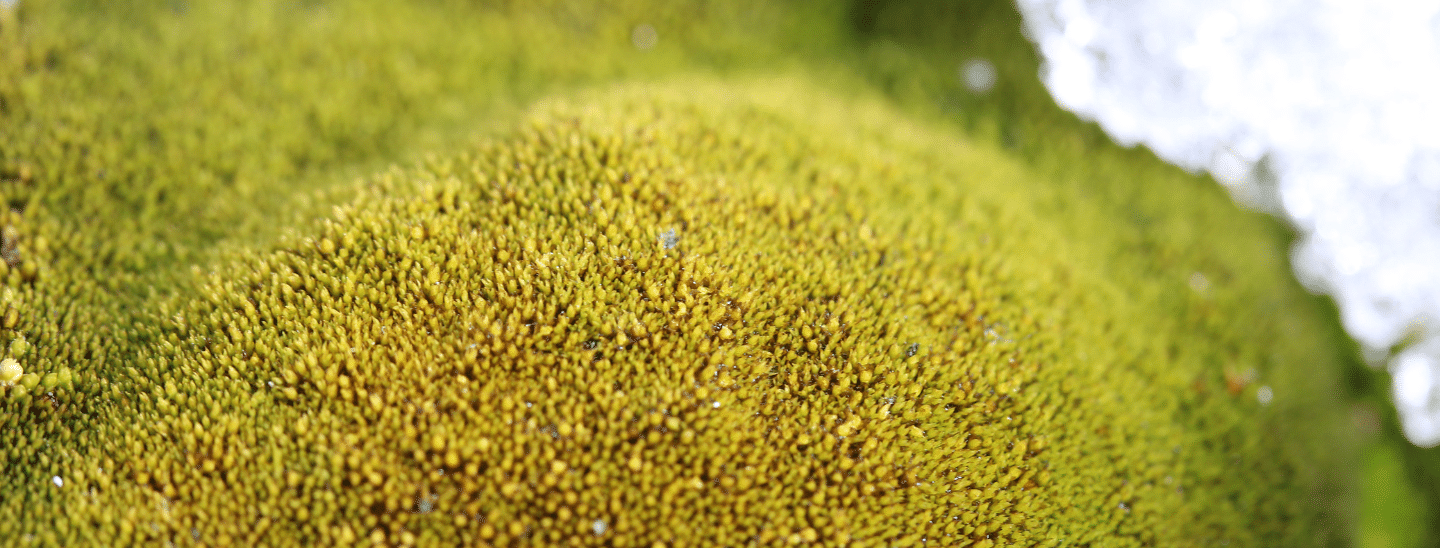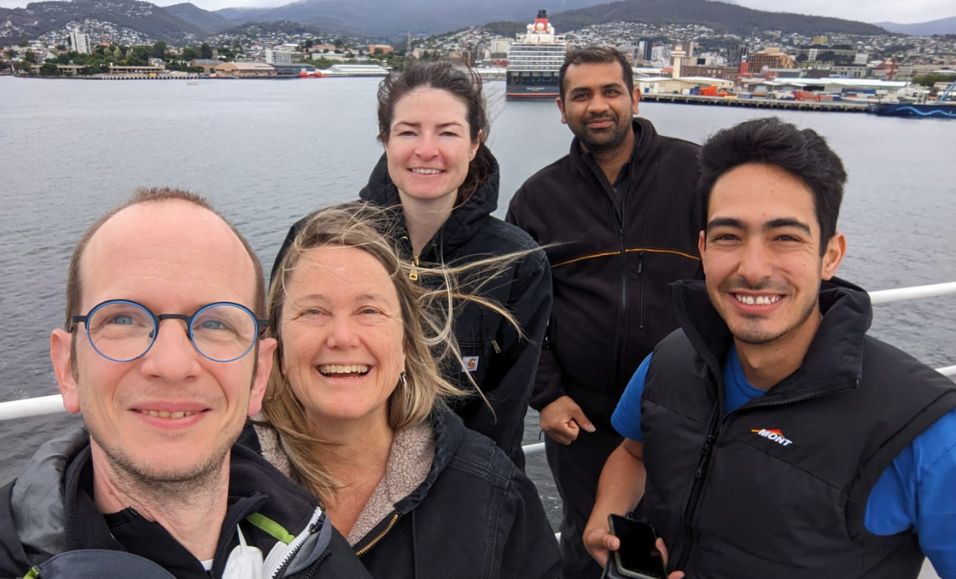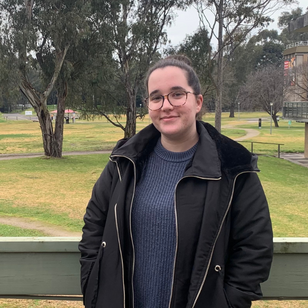
Scientists depart for Casey Station

Johan Barthélemy, Barbara Bollard, Krystal Randall, Ashray Doshi, and Juan Sandino are headed to Casey Station. Credit: Johan Barthélemy

Juan Sandino, Johan Barthélemy, Krystal Randall and Ashray Doshi boarding the Aiviq. Credit: Krystal Randall

The team are headed to Casey Station, one of four research stations managed by the Australian Antarctic Division. Credit: Simon Payne / Australian Antarctic Division

The moss beds around Casey Station. Credit: Krystal Randall

Antarctic moss can survive being frozen and thawed. Credit: Krystal Randall
It has been a song of ice and fire getting scientists to Antarctica this season. First the runway at Wilkins Aerodrome was covered in too much snow and then this feat of engineering, which must be kept strictly below -5°C, started to melt. But as everyone who works in Antarctica knows, expect the “A Factor”, which is to say, expect that things won’t go to plan and have a few contingencies in place—especially when unpredictable Antarctic weather is involved.
Fortunately, for SAEF’s scientists they’ve been able to swap a 4 hour flight for an 13 day voyage on board the Aiviq, an 110 metre icebreaker ship. It will take them across the Southern Ocean to Casey Station which will be their home for almost 2 months.
This multidisciplinary team of scientists include Krystal Randall, a postdoctoral biologist who recently submitted her PhD on moss microclimates, Dr Johan Barthélemy, a specialist in smart technologies that use AI, machine learning and big data analysis, Professor Barbara Bollard a pioneer in the use of drones and remote sensing systems for research in Antarctica, Dr Juan Sandino a postdoctoral engineer interested in developing drone-based remote sensing systems for environmental monitoring and Ashray Doshi who will be the team’s chief drone pilot.
As with most of SAEF’s fieldwork teams, each scientist is drawn from a collection of our partners, in this case, the University of Wollongong (UoW), Queensland University of Technology (QUT), Auckland University of Technology (AUT) and NVIDIA, and they’ll be supported by the Australian Antarctic Program.
With their cargo cleaned and packed, their permits approved, hours of training complete and fieldwork negotiated, renegotiated and signed-off the team are set to go.
“We have encountered many challenges already this season before we’ve even made it to Casey, so we are all crossing our fingers for smooth sailing over the rest of the season,” Krystal said before they boarded the ship.
Monitoring the moss
Once the team arrives at Casey Station they will head out to the moss beds, which are some of the best on the entire continent. Often dubbed “the Daintree of Antarctica”, these moss beds cover areas up to 50 m wide with dense moss that is up to 500 years old.
Each scientist will bring slightly different skills and research interests to the work. “We’ll all be pitching in as a team this season to achieve our research goals in the field,” Krystal explains.
Krystal studies moss microclimates. For her, fieldwork involves deploying sensors across the moss beds to measure moisture content, temperature, light levels and wind speed, as well as collecting tiny moss samples that she will use to identify the moss species, their health status and look at the types of molecules they use to protect themselves against the harsh environmental conditions.
Since scientists started studying these moss beds, data collection has been reliant upon travel to Casey Station. What they’ve long dreamt of is having a monitoring system that can withstand the extreme environment and send data between Antarctica and Australia.
That’s where Johan and his research expertise comes in. He’ll be leading the team to install and test a new smart sensor system which can remotely monitor the moss and send back data via long range, low power communication.
“At the same time we will be testing the first prototype of an autonomous AIoT (smart) sensing platform integrating different types of environmental sensors and artificial intelligence to monitor the conditions. This prototype will provide the data we need to design and optimise the next generation of the platform,” explains Johan.
This continuous monitoring of the moss beds will allow Krystal to develop a microclimate model for the area which will help scientists understand how healthy or unhealthy the mosses are, and identify areas that are at risk of becoming stressed in the future.
Deploying the drones
While half the team will be focused on collecting data from the ground, the other half will collect data from the sky. Barbara, Ashray and Juan will fly drones fitted with specialised cameras and sensors to collect high-resolution imagery of the moss beds. This includes the collection of multispectral and hyperspectral information that can be translated into a type of “signature key” that could help detect moss in the imagery, which is useful when researchers are trying to understand what is happening to the moss across vast areas of Antarctica.
In a process that Barbara describes as like “mowing the lawn but in the sky” they will capture thousands of photographs which will be stitched together for use in a variety of research, not only by this team but other researchers within SAEF and beyond.
This is where the benefits of having a team with such varied multidisciplinary skills really starts to become apparent. The data collected using the drones will provide crucial spatial information for Krystal’s research, while the data collected from the ground will be key control data for Barbara, Juan and Ashray’s research.
Juan will be a key go-between, as a back-up pilot and ground surveyor.
“I will assist and learn from Krystal on collected data and properties of moss, its condition, and identify key environmental variables for its detection and conservation,” Juan explains. He will then translate these ground observations of moss into their respective visual and spectral representation with images.
“My goal is to create classification and regression models based on machine learning to predict the location, condition and distribution of moss using drone imagery.”
Meanwhile, in order to ensure the sensor system is collecting data that is most useful to researchers, Johan needs to work with biologists like Krystal who will be using the data in the research.
While undertaking this work, they’re hoping the “A Factor” doesn’t present itself, but they’ll be ready if it does.
“It’s one thing to design and build a device in the cosy and controlled environment of a lab, but it’s going to be a completely different story in an unknown and harsh environment for the actual deployment. This will bring unexpected challenges for sure!” says Johan.


